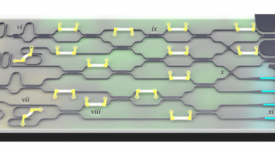New Materials Could Lead to Computers That Work Like the Human Brain

09/14/2021 - For decades, computer chips have gotten denser, faster and more energy efficient. But in recent years, those improvements have slowed to a crawl.Yet some of the most exciting new applications engineers are exploring — self-driving cars, microscopic robots to diagnose and treat diseases inside the human body, and systems collecting environmental data for battlefield awareness or public health forecasting — need fast, compact, energy-efficient computer chips that can be integrated directly into these systems, rather than relying on connecting to supercomputers far away.



